Sun-warmed boards, fresh foliage, and the low hum of pollinators can make a deck feel less like a stage for furniture and more like a living ecosystem. Current design reports point to container greenery—especially multi-level displays and vertical installations—as the fastest-growing way homeowners personalize outdoor rooms, adding privacy, color, and even food without structural overhauls. Homes & Gardens Lightweight modular planters, drought-smart plant palettes, and integrated seating are all trending upward, helping decks of every size work harder and look lusher. The twenty fresh ideas below show how thoughtfully placed plants can transform a plain platform into a botanical retreat you’ll enjoy from dawn espresso to starlit nightcap.
1. Tiered Plant Display for Deck Corners

A three-step, cascading tower of pots instantly energizes a dead corner and draws the eye upward. Studies on container fashion highlight tiered arrangements as a top style because they layer height without hogging square footage. Start with the heftiest planter at floor level for stability, then stack lighter resin or fiber-clay pots on discreet risers so draping sweet potato vine or calibrachoa can spill freely. Finish with a compact grass or dwarf fountain bamboo for vertical punctuation. Rotate blooms by season—think tulips in spring, zinnias in summer, ornamental peppers in fall—to keep the corner dynamic and camera-ready.
2. Deck-Side Vertical Living Wall
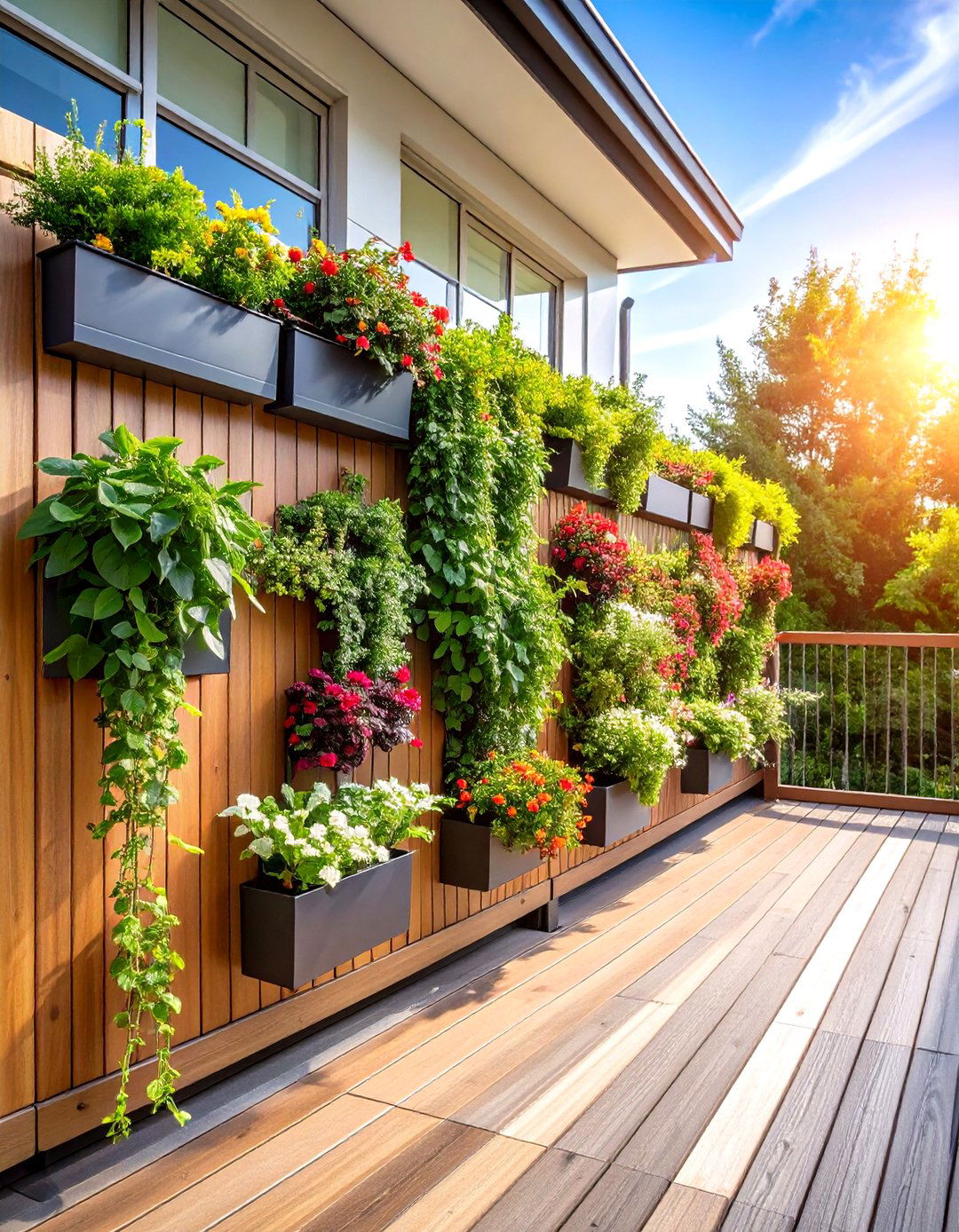
Unlike sprawling pot clusters, a living wall mounts greenery straight onto the railing or façade, freeing every inch of deck boards for seating. Choose modular panels with built-in drip lines; they sip water efficiently and can even host strawberries or lettuces for snackable décor. Stagger pocket depth so trailing ivy softens the bottom edge while upright coleus or begonias blaze at eye level. If the deck faces scorching afternoon sun, coat the wall backing with reflective paint to limit root heat and keep foliage lush.
3. Privacy with Deck Railing Planters
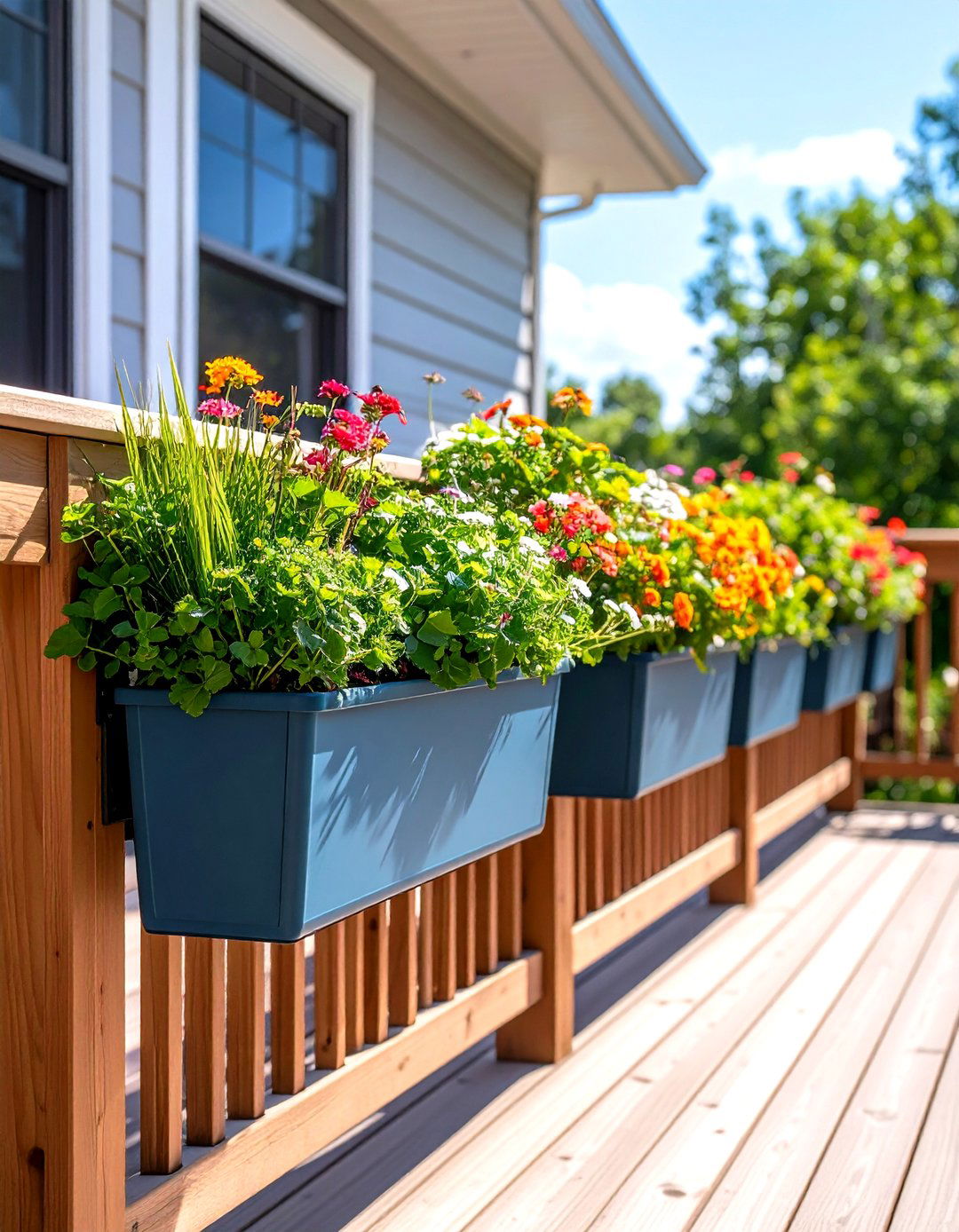
To screen neighboring windows without tall fences, clip-on railing boxes packed with lofty ornamental grasses or bushy geraniums rise just above eye line. Flower Window Boxes The Home Depot For denser cover, double-stack planters—one inward, one outward—and thread bamboo stakes between to support fast-climbing scarlet runner beans. The layered foliage breaks wind, mutes street sounds, and frames sunset views with fluttering seed heads. Remember to balance weight evenly along joists and use self-watering inserts so you’re not dragging the hose daily.
4. Heat-Loving Plant Mix for Sun-Drenched Decks
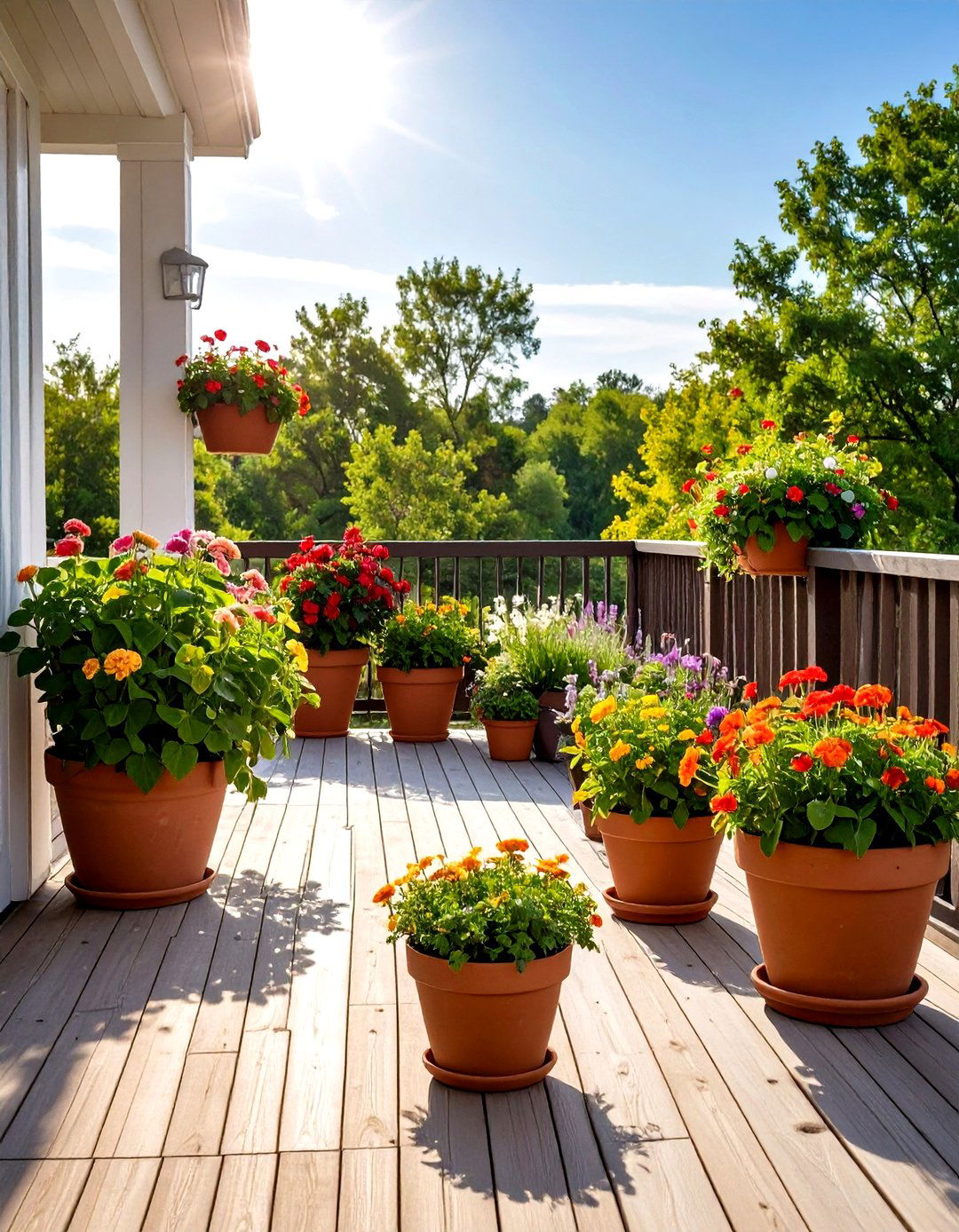
In south-facing exposures, resilient combos of geranium, lantana, and trailing verbena shrug off 38 °C afternoons yet bloom nonstop. Southern Living Southern Living Blend textures—a chunky paddle cactus beside airy gaura—to keep the arrangement visually cool even when temperatures soar. Terracotta or composite pots painted pale reflect heat, and a two-inch mulch of fine gravel stabilizes soil moisture. Cluster several containers near the deck’s hottest corner to create a heat-tolerant mini-border that still looks lush when softer plants wilt.
5. Shady Deck Fern Haven

When an overhanging pergola or nearby maple filters sunlight, lean into lush shade with Japanese painted fern, coral bells, and trailing creeping Jenny. HGTV A glazed ceramic pot in mossy green amplifies the woodland vibe, while a small uplight tucked behind fronds adds evening drama. Mixing three leaf textures—feathery, scalloped, and cascading—keeps the palette rich without relying on flowers. Slide the grouping close to reading chairs; the cool, humid microclimate it creates feels like natural air-conditioning on steamy nights.
6. Fragrant Herb Bar on the Deck
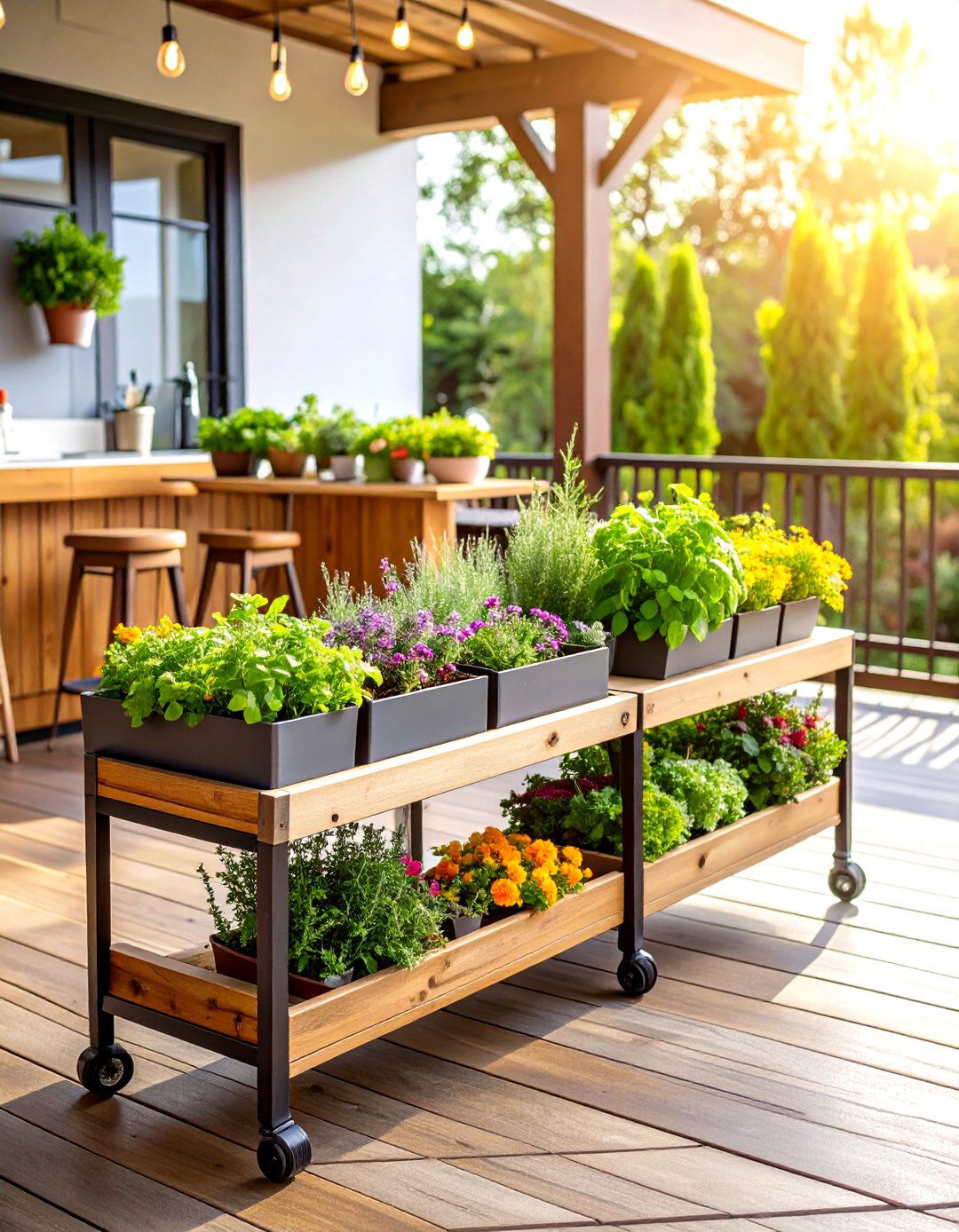
Few pleasures beat snipping lemon thyme right where cocktails are poured. Compact herbs thrive in shallow troughs that hang at counter height, sparing precious floor space. Savvy Gardening Better Homes & Gardens Pair perennial rosemary with annual basil to stagger harvests, and tuck in edible flowers like nasturtium for garnish. A common rookie error is overwatering scent-rich Mediterranean herbs; install a gravel layer and water only when soil is dry two knuckles deep. Slide a small bar cart beside the trough, and the deck becomes an aromatic mixology lab.
7. Pollinator Deck Container Garden
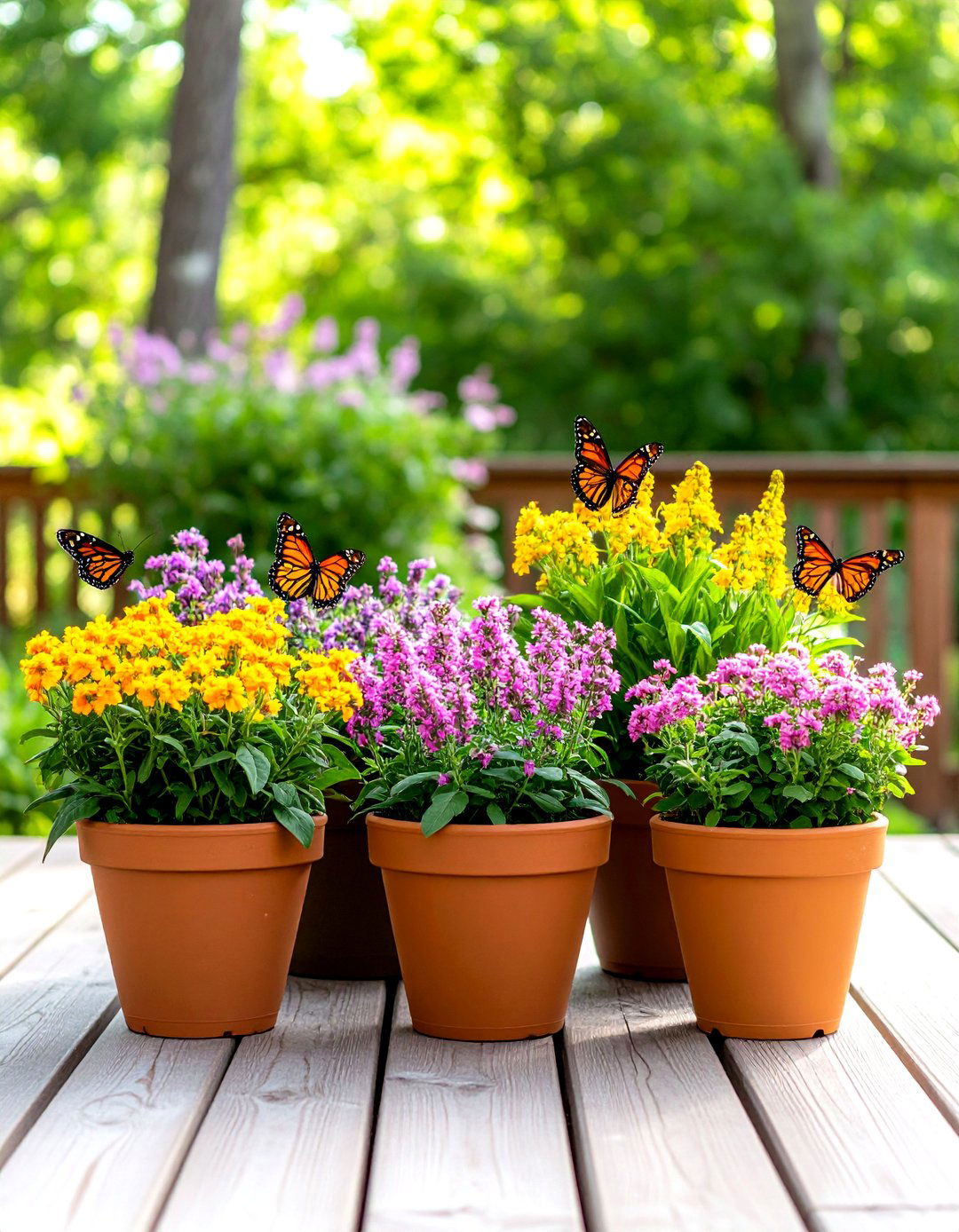
Bright pots of agastache, salvia, and dwarf milkweed draw butterflies and hummingbirds into arm’s reach, turning coffee breaks into wildlife watches. Monrovia National Wildlife Federation U.S. Fish and Wildlife Service Combine at least three bloom shapes—tubular, flat, and dome—to serve diverse species. Position nectar hosts in the sunniest swath and tuck a saucer of pebbled water in shade for safe sipping. Skip pesticides entirely; beneficial insects will patrol aphids if you provide consistent nectar. Labeling plants for visiting kids or guests sparks conservation conversations right on the deck.
8. Planter Bench Seating to Green the Deck
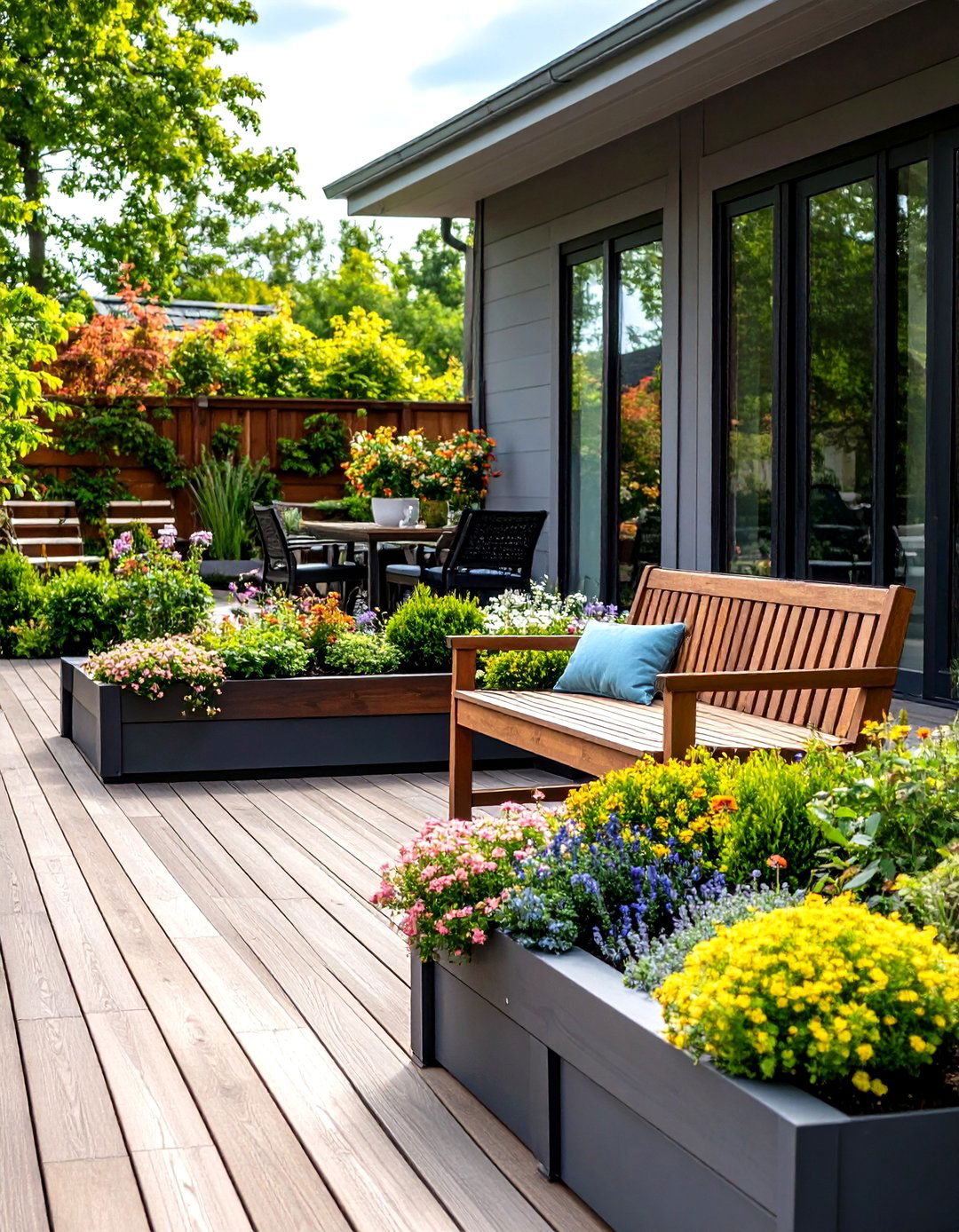
Raised benches flanked by built-in boxes fuse seating and greenery, leaving the center clear for traffic. Fill end planters with dwarf shrubs like box honeysuckle for year-round mass, then layer seasonal color beneath. For extra comfort, match bench height to 45 cm and add waterproof cushions. Running low-voltage strip lighting under the bench lip spotlights foliage at night and helps guests avoid toe stubs.
9. Succulent Centerpiece for Deck Tables
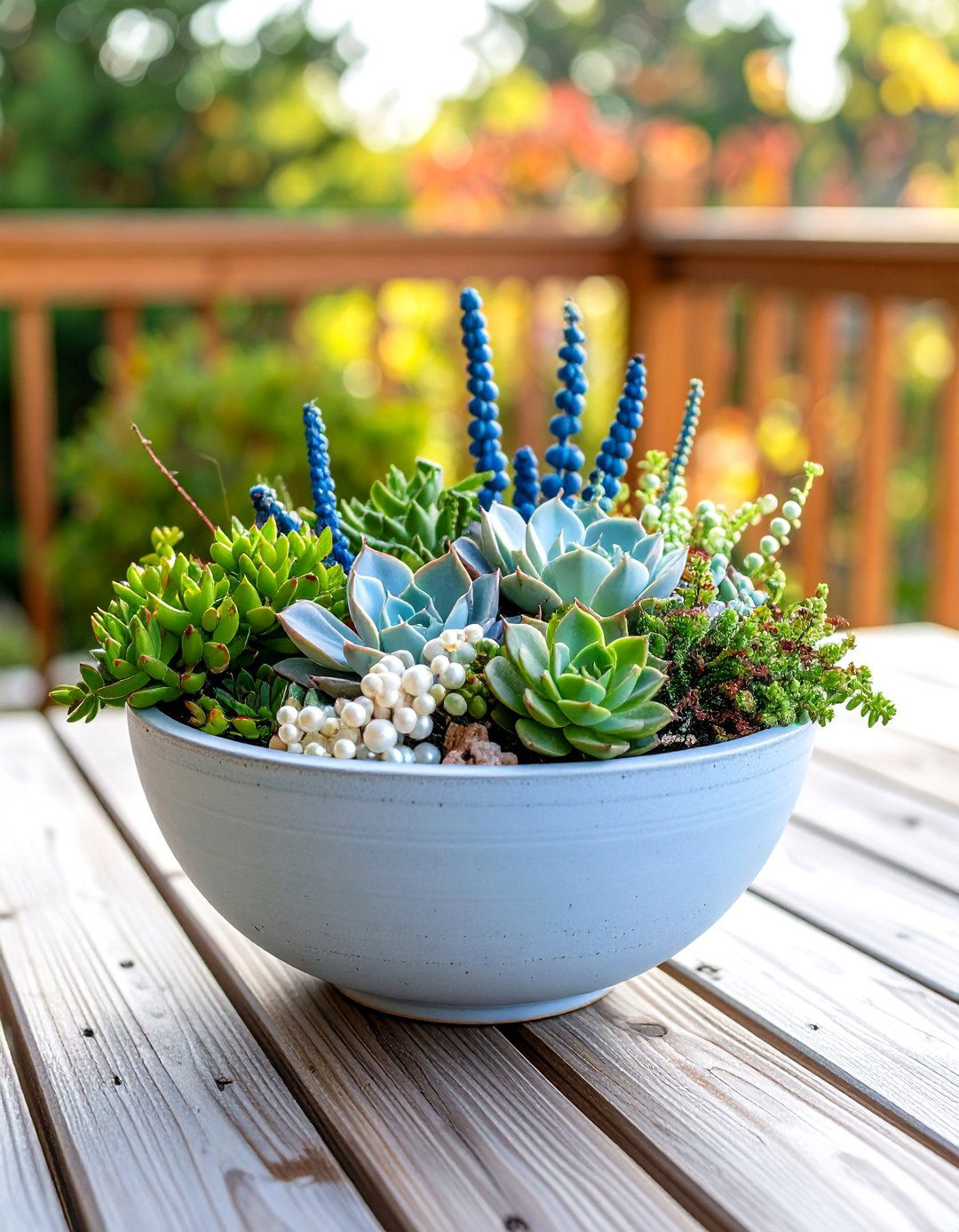
A shallow bowl of echeveria, string-of-pearls, and blue chalksticks creates a living sculpture that endures forgotten waterings. Mix cactus soil with pumice for airy drainage, then top-dress with contrasting black gravel to make rosettes pop. Rotate the bowl weekly so each side gets equal sun, preventing lopsided growth. If rain threatens, scoot the dish under an eave; saturated soil is the only real threat to these drought artists. Their architectural shapes spark conversation without blocking sightlines across the table.
10. Potted Small Trees to Anchor the Deck
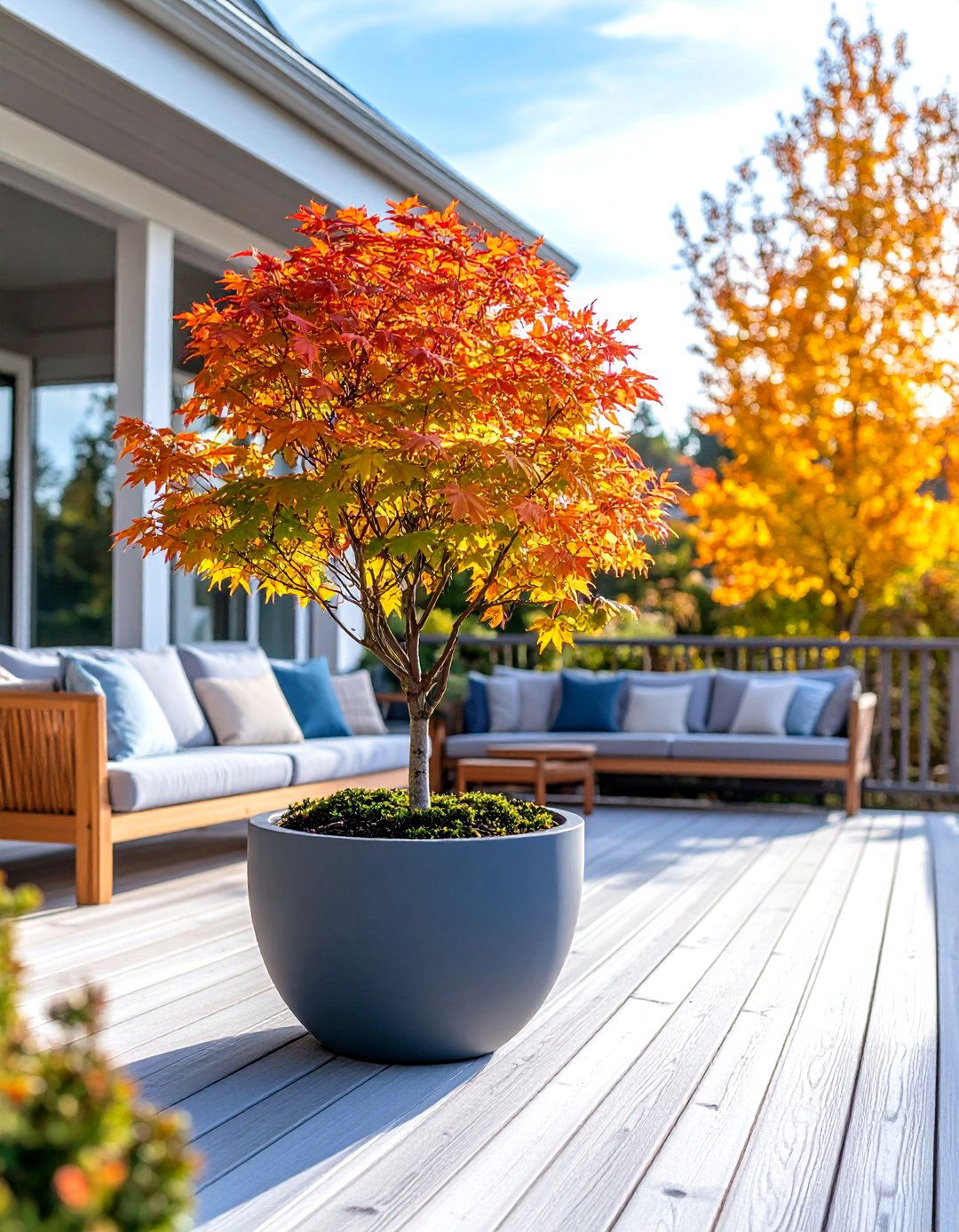
A dwarf Japanese maple or citrus in a 60-cm frost-resistant container becomes a living focal point, grounding lightweight furniture clusters. Choose slow growers labeled “patio” or “terrace” so root balls stay happy for years. Use a wheeled dolly under the pot for seasonal repositioning—south sun in winter, filtered light in peak summer. Undersow with shade-tolerant violas or creeping oregano to disguise bare soil and add color at the base.
11. Monochrome Pot Palette for Modern Decks
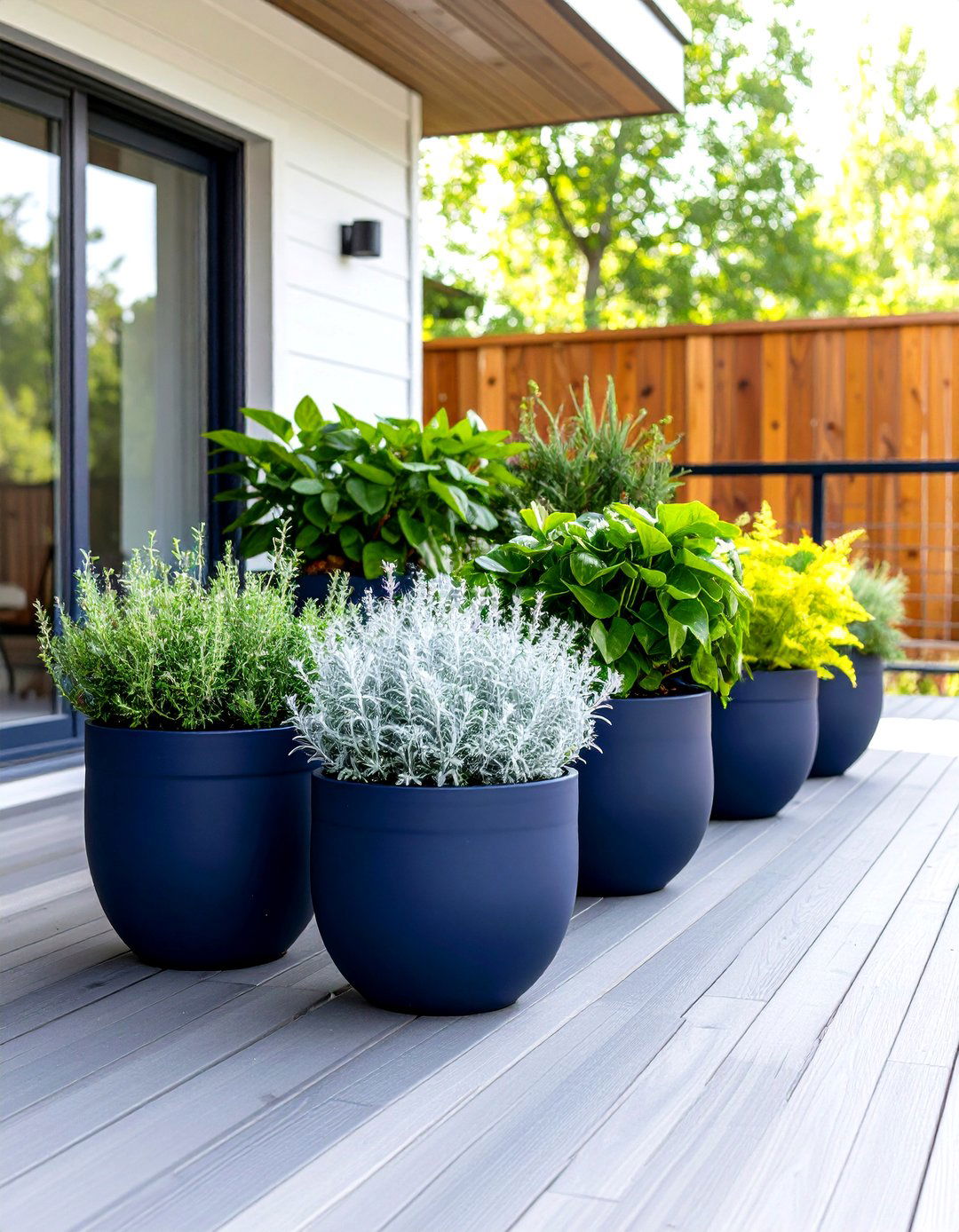
Sticking to one hue—say, midnight blue—across pots and cushions lets the plant textures do the talking. Spray existing mismatched containers with outdoor enamel to unify them, then stage silver-leafed artemisia, chartreuse coleus, and deep-green philodendron for a high-contrast trio. Repeating color ties an eclectic plant collection into a sophisticated statement, perfect for minimalist architecture.
12. Seasonal Plant Rotation Strategy on the Deck
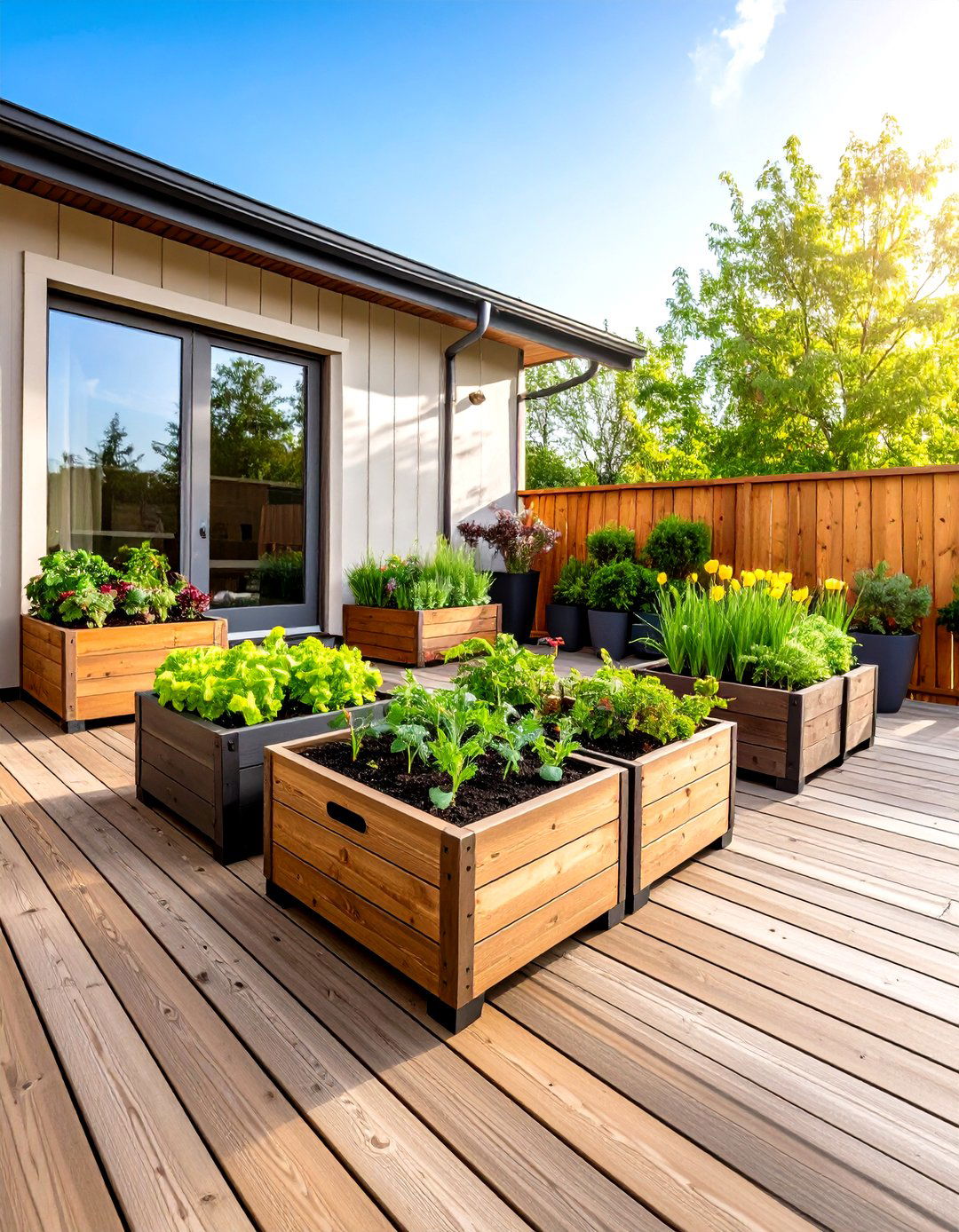
Treat planters like interchangeable art frames. In early spring, slot in tulip crates; when petals fade, swap for pepper and tomato seedlings; come autumn, sub perennial mums or ornamental kale. Stashing extra inserts by the shed makes turnovers quick and keeps soil fertility tailored to each crop’s needs. Water-soluble fertilizer at each change-over jump-starts growth and minimizes waste.
13. Native Plant Habitat on Your Deck

Pots of coastal sneezeweed, blanket flower, and native grasses mimic nearby ecosystems and require less pampering once established. National Wildlife Federation These species synchronize with local pollinators and weather swings, meaning fewer deadheading sessions and lower water bills. Nest decorative river stones among stems to echo regional landscapes while reducing evaporation. Educational tags identifying native origins encourage neighbors to adopt climate-appropriate choices too.
14. Hanging Plant Curtain Along Deck Edges

Stringing macramé hangers every 30 cm transforms the railing’s inner face into a living drape, framing views without blocking breezes. Alternate spider plants, trailing philodendron, and petunias so bloom bursts peek through green tendrils. Attach hooks to joist undersides rather than deck boards for sturdier support, and use adjustable chains to vary height and create depth. A misting wand keeps high pots hydrated in seconds.
15. Climber-Covered Pergola for Deck Shade
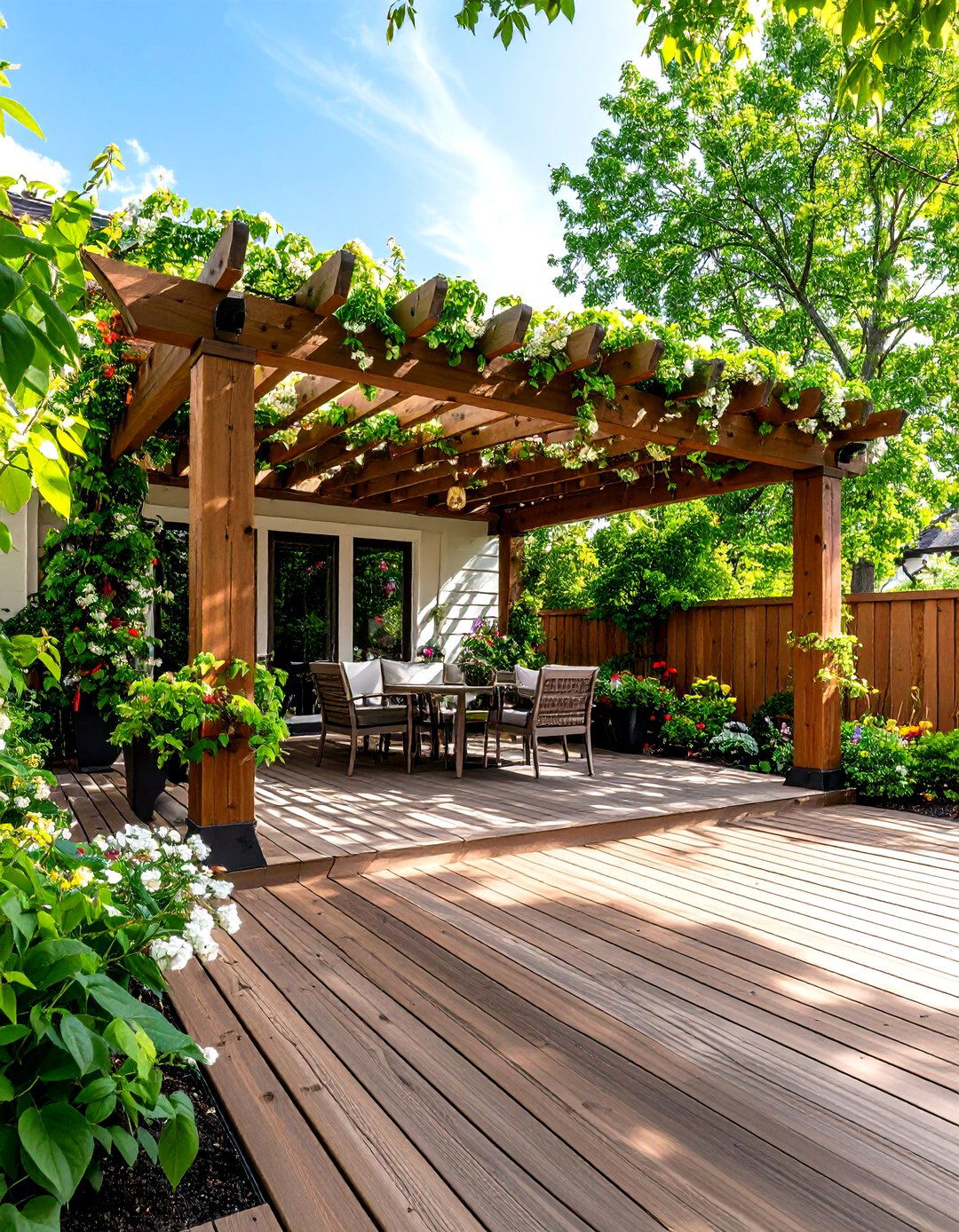
Trellising fragrant star jasmine or fast-growing scarlet runner beans over a pergola drops deck temperature by several degrees while perfuming twilight gatherings. Secure eye screws along beams to guide vines and prevent stem damage in storms. Trim lightly after first bloom flush to maintain airflow and reduce mildew risk. Fairy lights woven through foliage turn the natural ceiling into a glittering night canopy.
16. Xeric Mediterranean Deck Garden
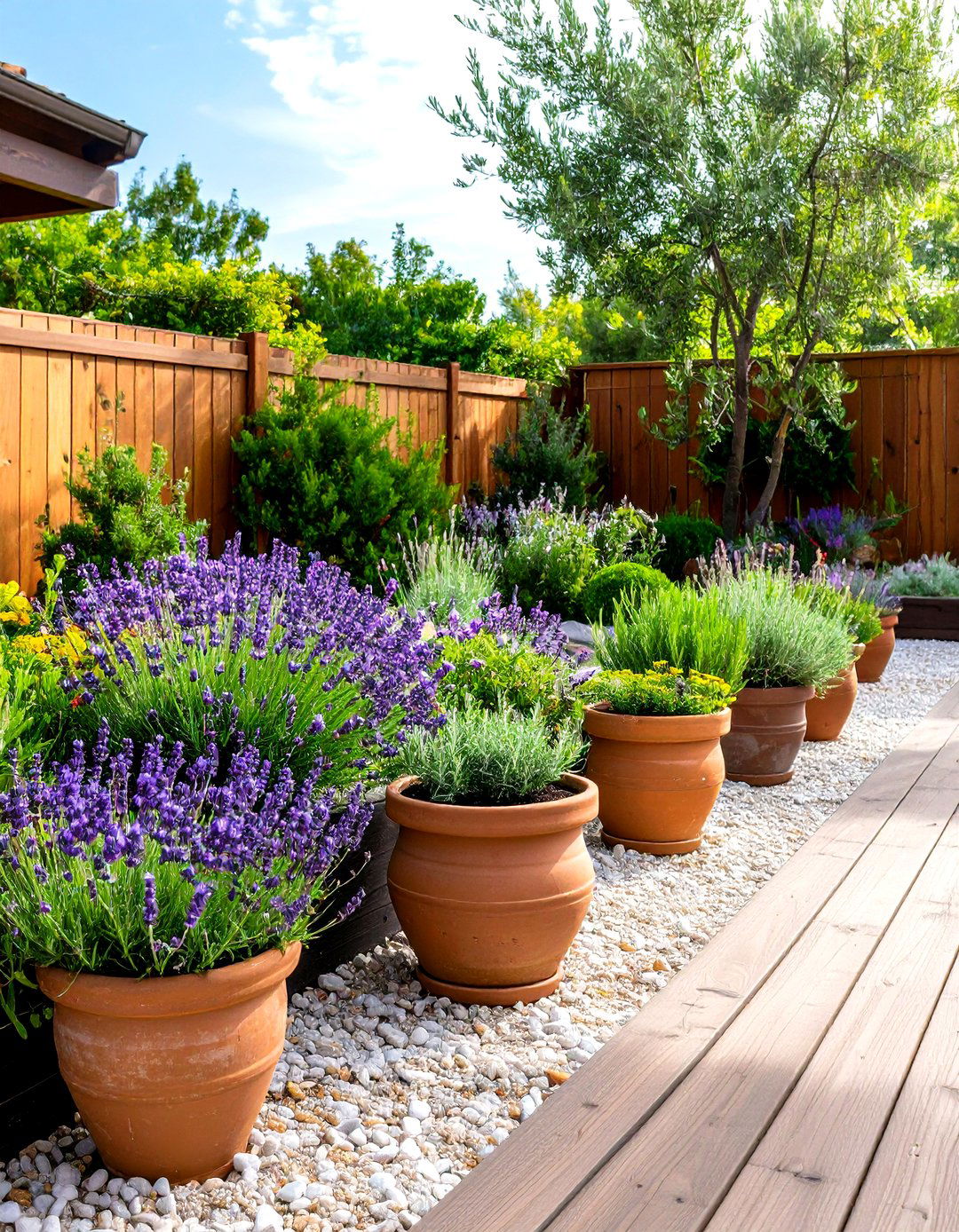
If local water restrictions loom, adopt a palette of lavender, dwarf olive, and rosemary—plants evolved for lean soils and blazing sun. A gravel mulch and unglazed clay pots wick moisture evenly, and a single morning soak suffices in most climates. The silvery foliage reflects light, lending the deck a coastal-holiday vibe without airfare or hefty irrigation bills.
17. Water Bowl and Bog Plants for Deck Serenity

A glazed ceramic basin with dwarf papyrus, pickerel weed, and floating water-lettuce brings the calming trickle of a pond within arm’s reach. Add a small solar bubbler to keep mosquitoes at bay and oxygenate roots. Place the bowl where it catches two to four hours of sun so blooms form without overheating. Surround with elephant ear pots to echo the lush, tropical mood.
18. Edible Green Wall for Deckside Cooking
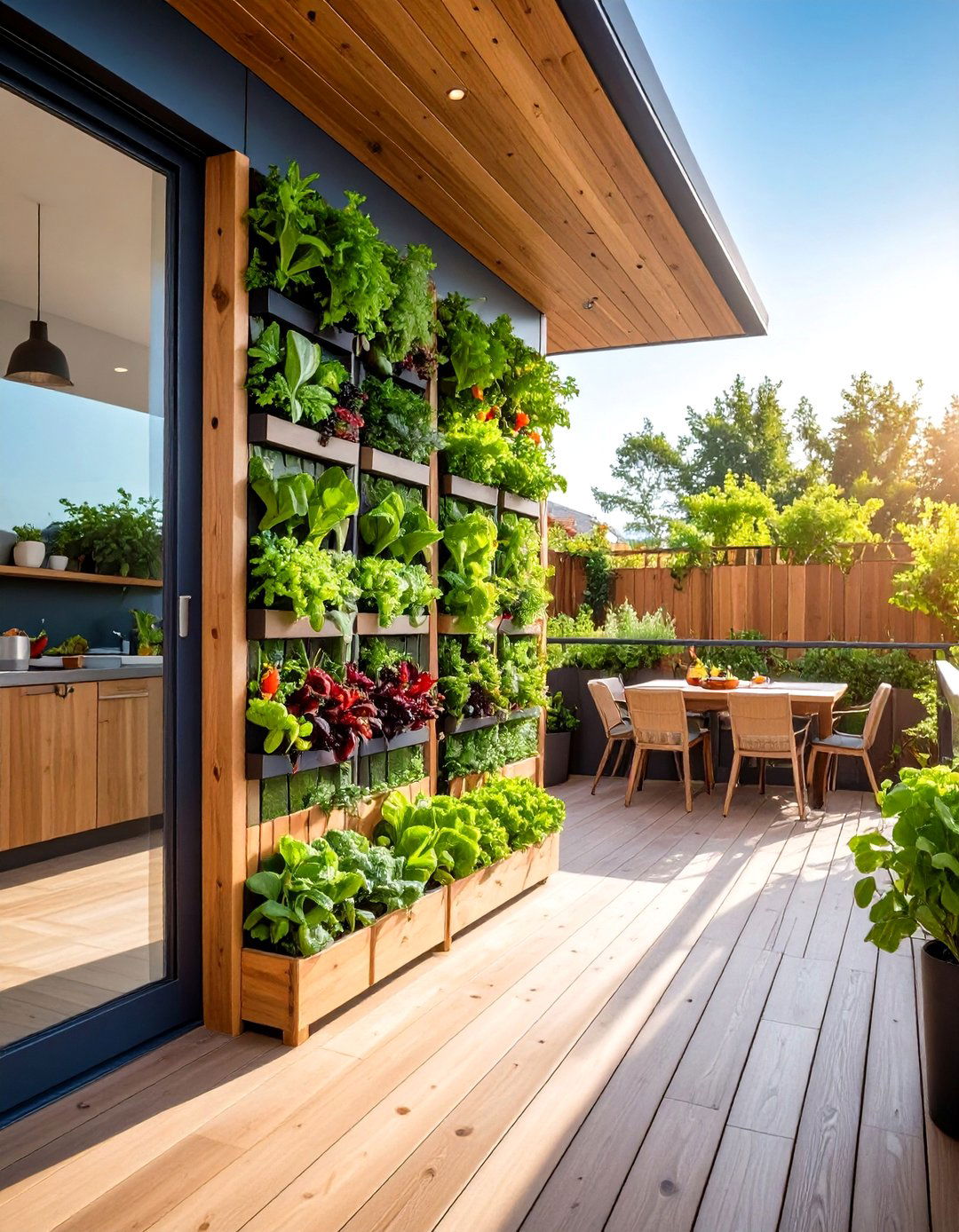
Vertical pockets packed with baby kale, leaf lettuce, and chili peppers deliver salad ingredients steps from the grill. Use felt pockets with integrated drip gutters to prevent soggy floorboards. Stagger plantings every two weeks so new leaves replace harvested bunches, ensuring a continuous supply. A sparse sprinkle of organic compost tea down the top pocket feeds the column in one go, reducing fertilizer runoff.
19. Evergreen Planters for Year-Round Deck Appeal
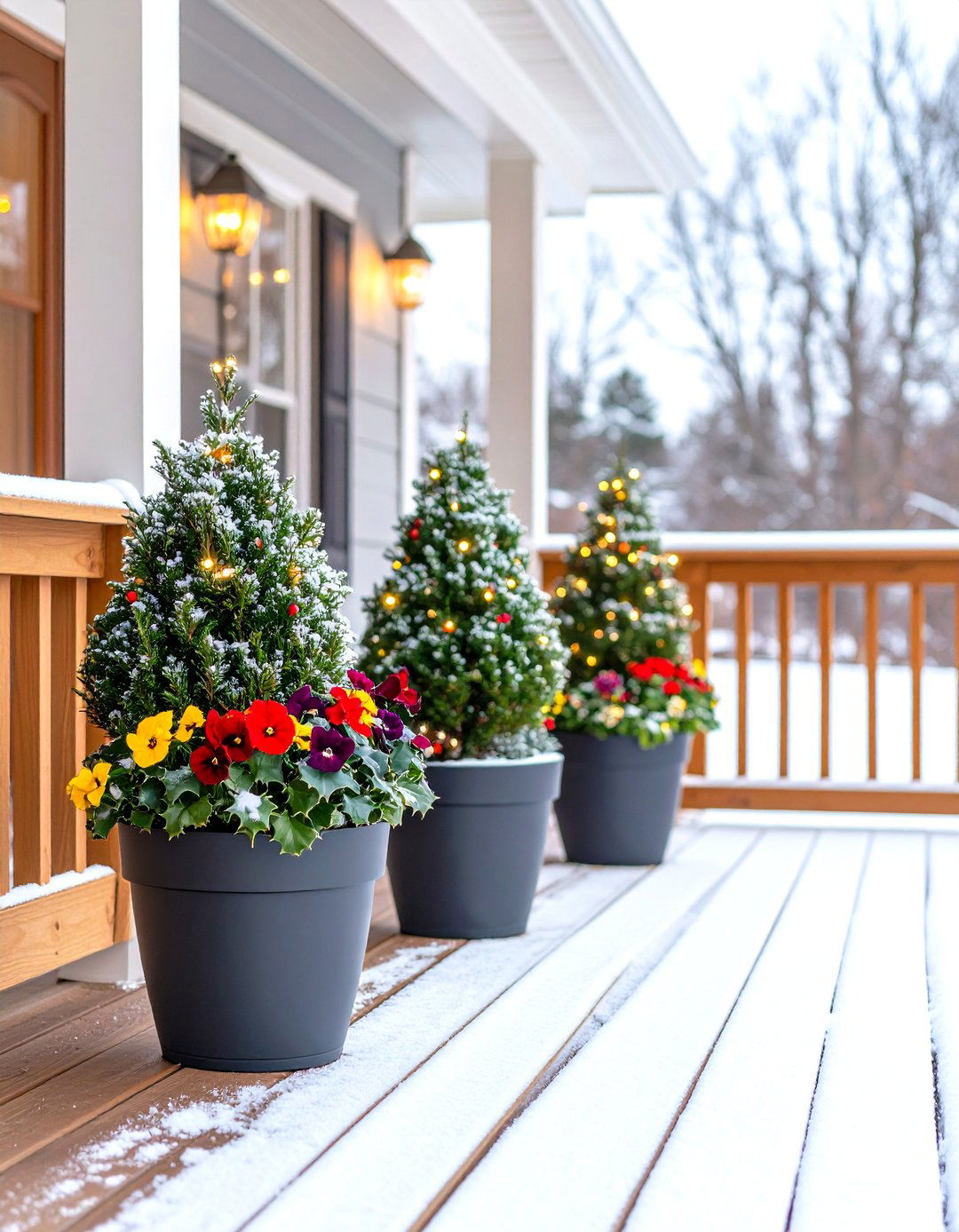
Winter doesn’t have to strip your deck bare. A trio of dwarf hinoki cypress or Mini Touch™ holly in charcoal-colored pots stays vivid through frost, providing structure when perennials die back. Southern Living Underplant with pansies or ornamental cabbage for pops of seasonal color. Cluster evergreens near the door so greenery greets you even on chilly mornings.
20. Ambient Deck Lighting with Trailing Vines
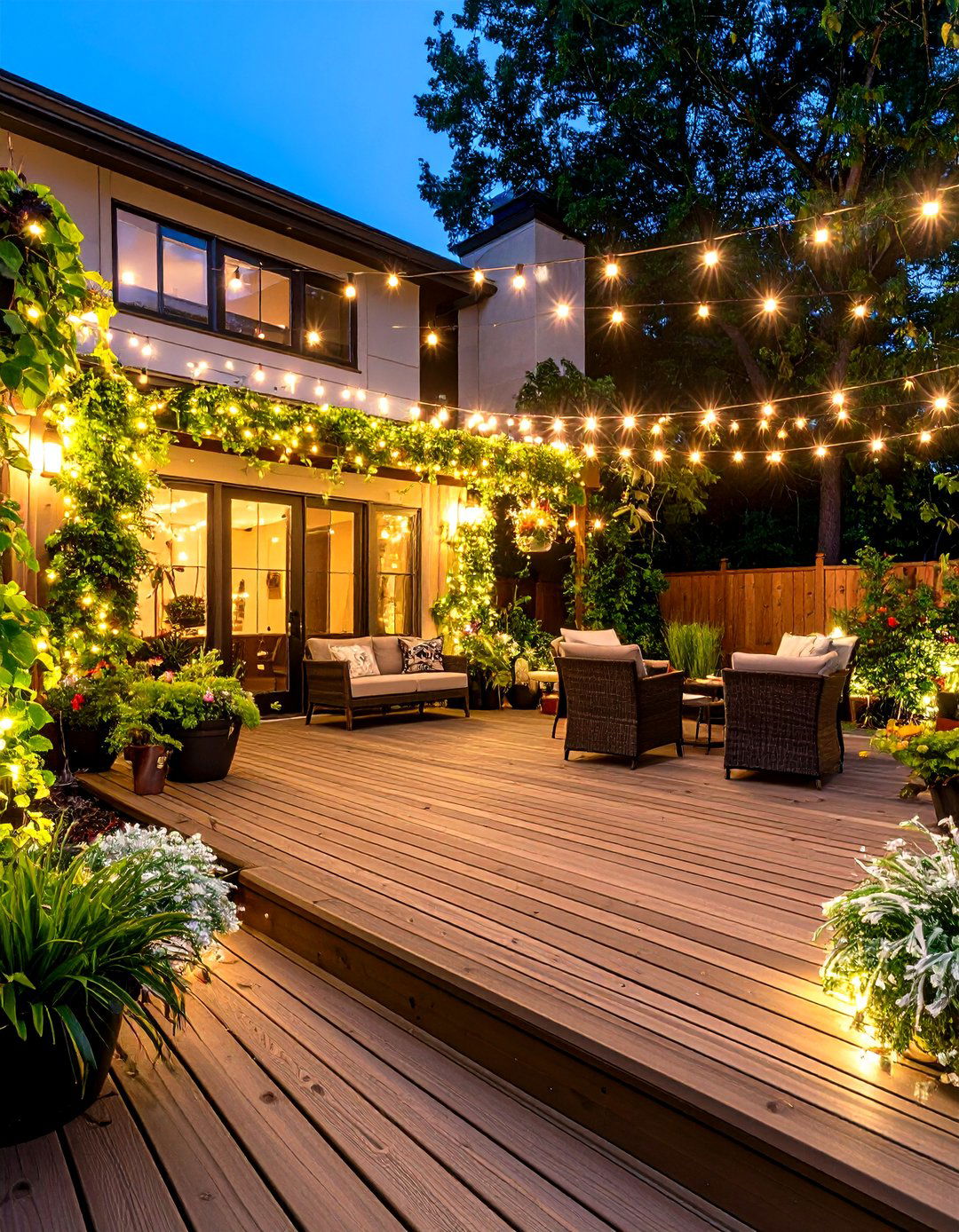
Finally, thread weatherproof fairy lights through cascading ivy or silver falls dichondra in overhead baskets. The foliage diffuses the glow, creating soft pools of light that feel magical yet practical for late-night lingering. Low-voltage LED strands stay cool, protecting leaves, while built-in timers simplify evening ambiance. Pair with a dimmable lantern on the table to layer illumination and keep the botanical theme cohesive.
Conclusion:
Thoughtful plantings can morph any deck—from compact urban perch to sprawling backyard stage—into a breathing, ever-changing sanctuary. Tiered towers maximize corners, living walls liberate floor zones, and herb bars or native habitats add fragrance, flavor, and ecological value. Whether you chase pollinators with vivid salvia, chase shade with fern tapestries, or chase silence with a trickling water bowl, each green gesture enriches outdoor time while echoing current sustainability and style trends. Let these twenty approaches inspire you to experiment boldly, nurture wisely, and watch your deck blossom into the most inviting room in the house.


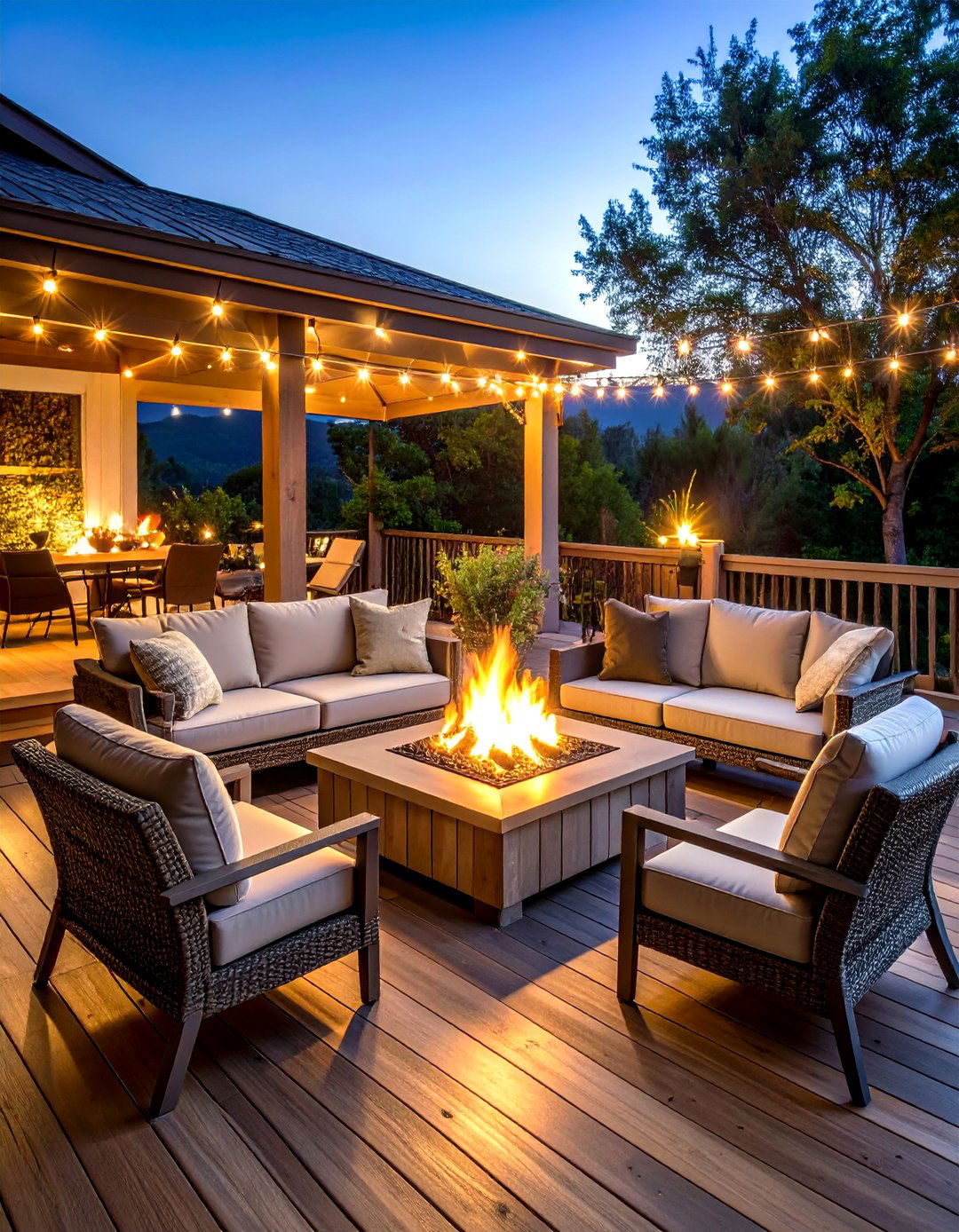
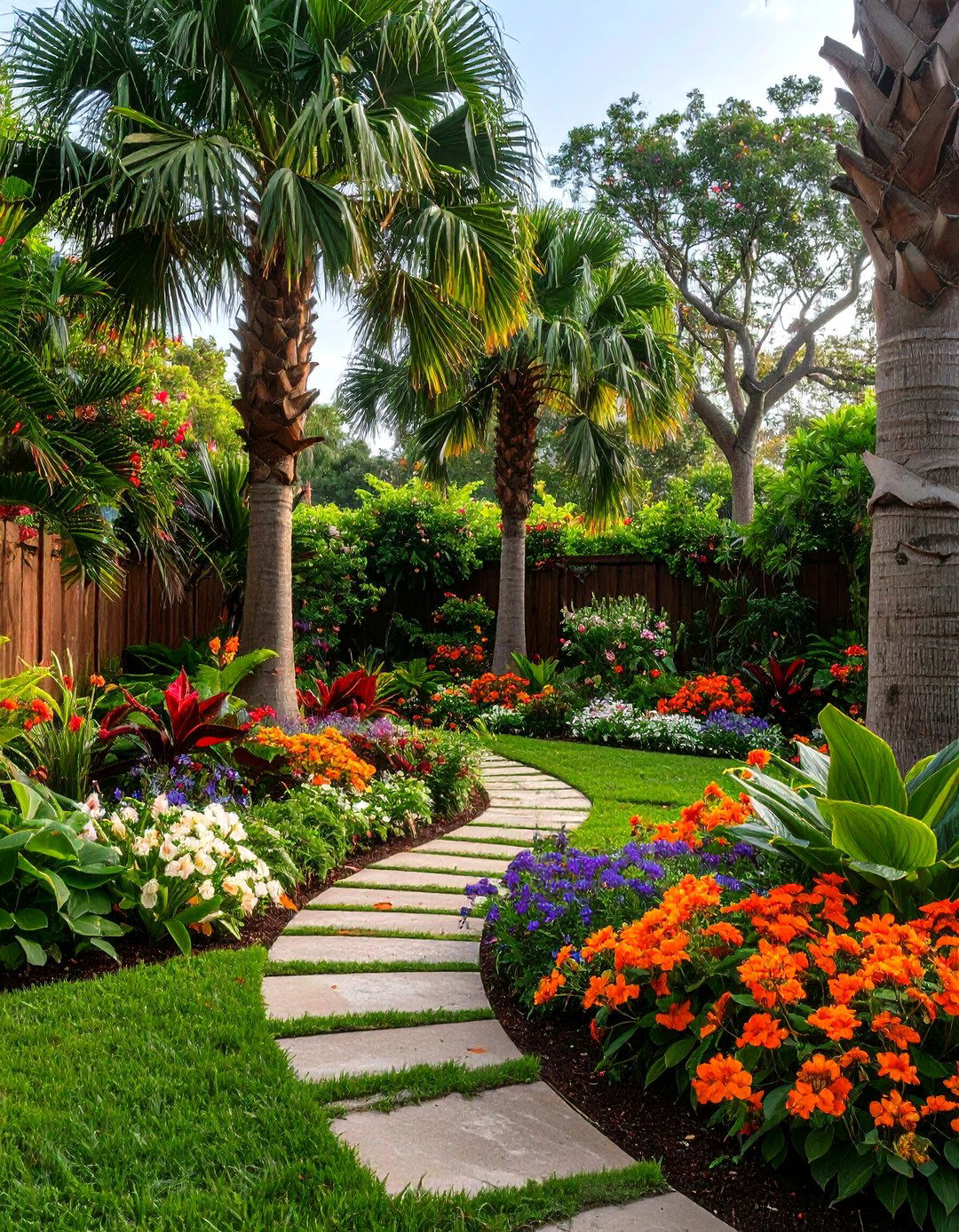
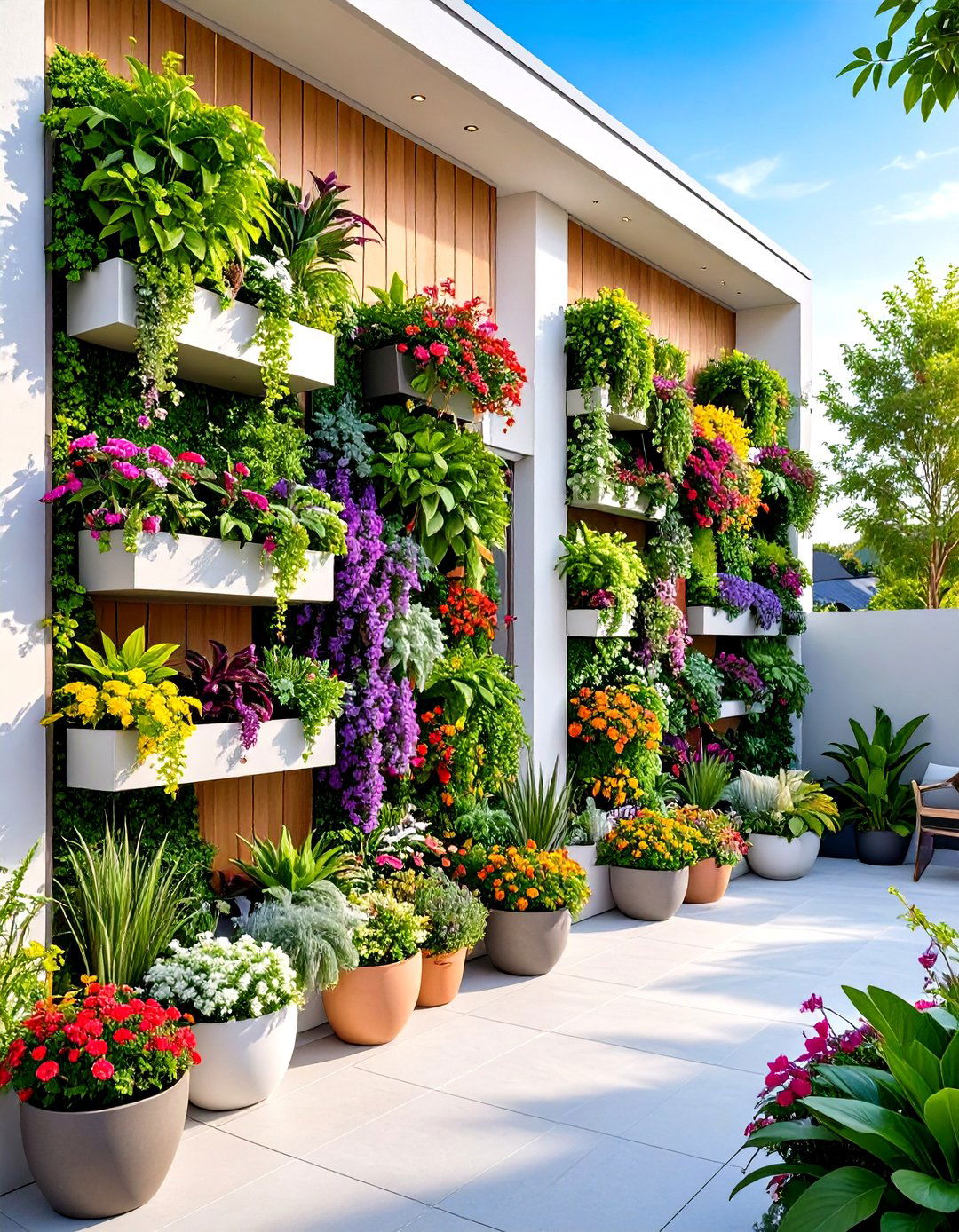


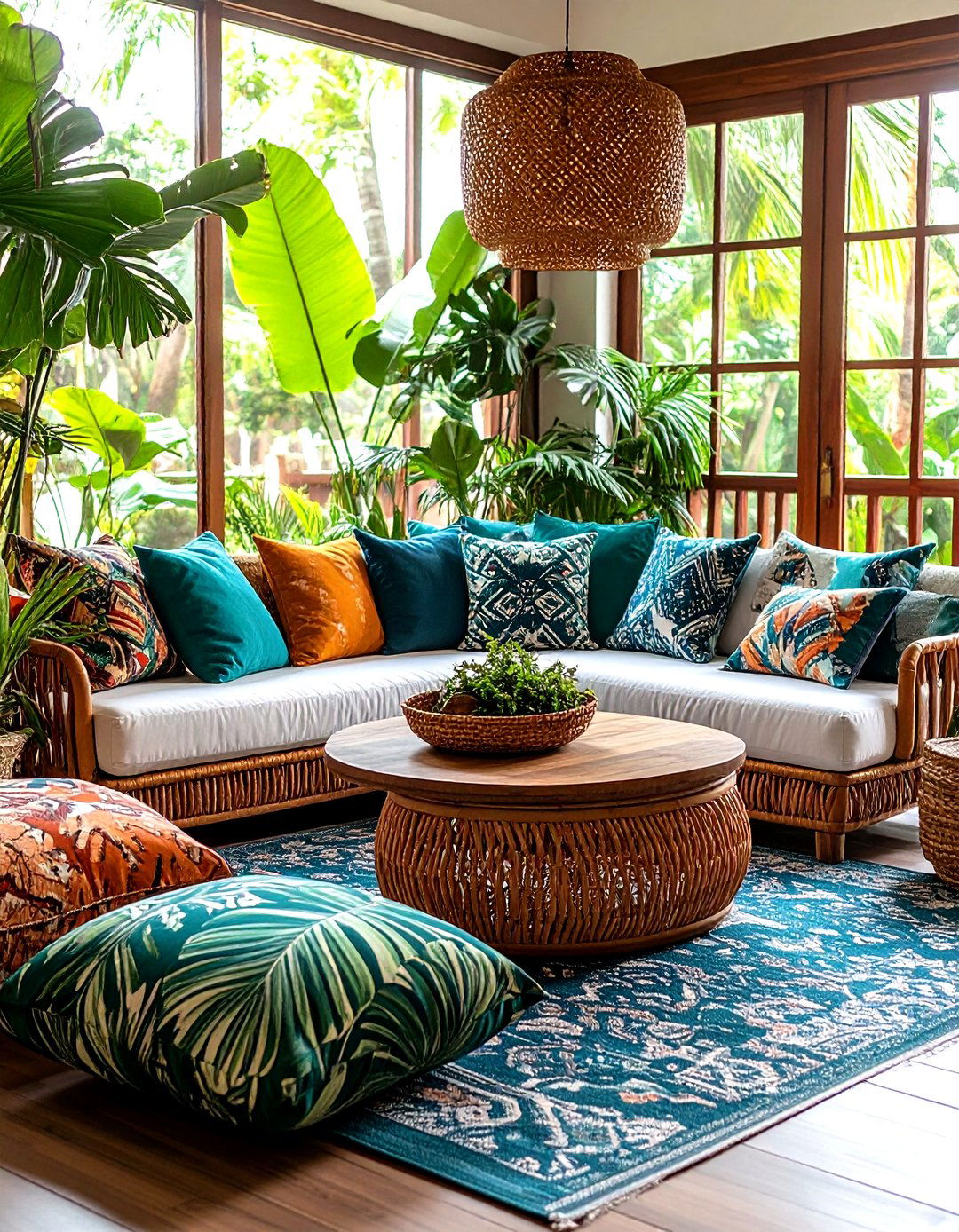
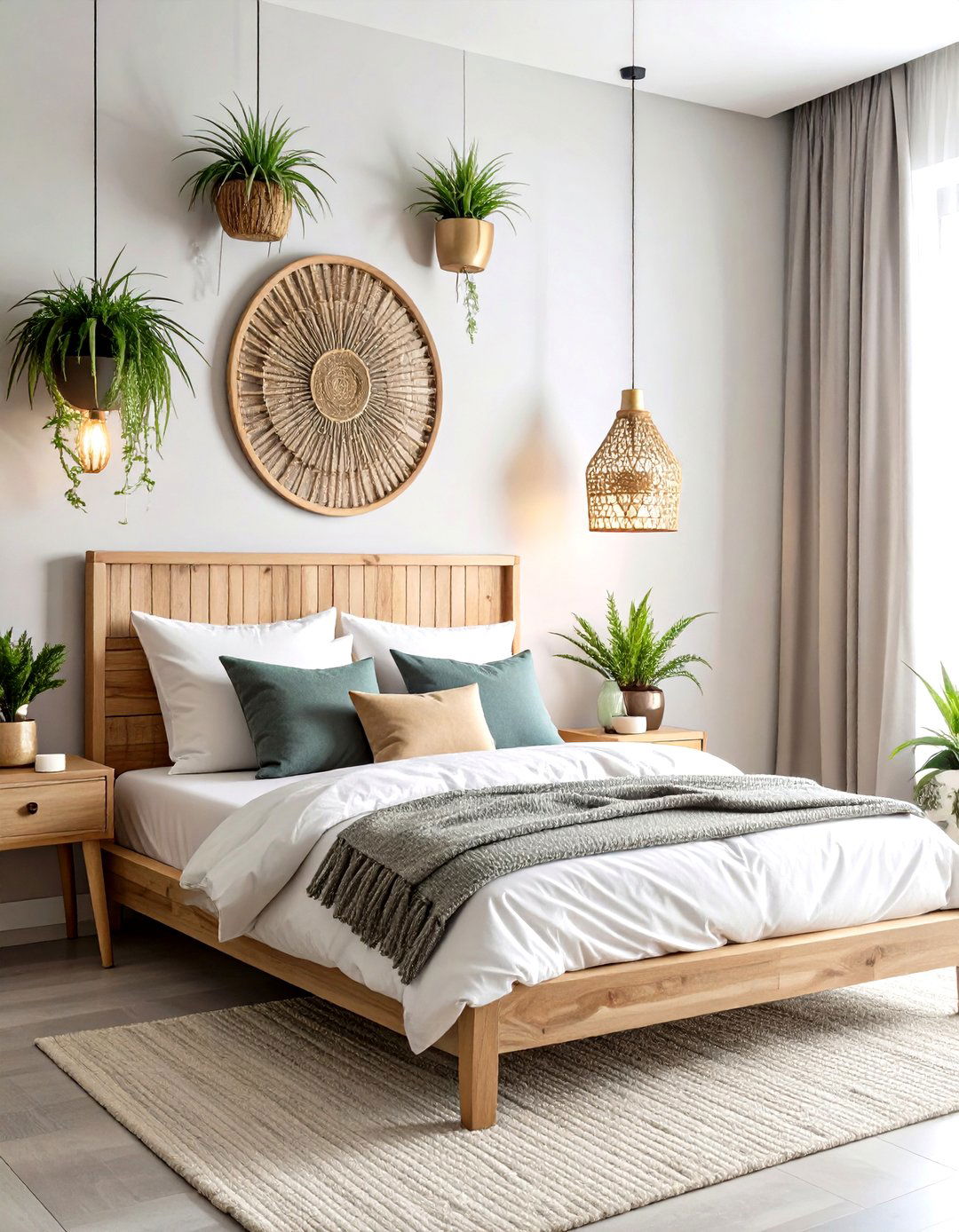
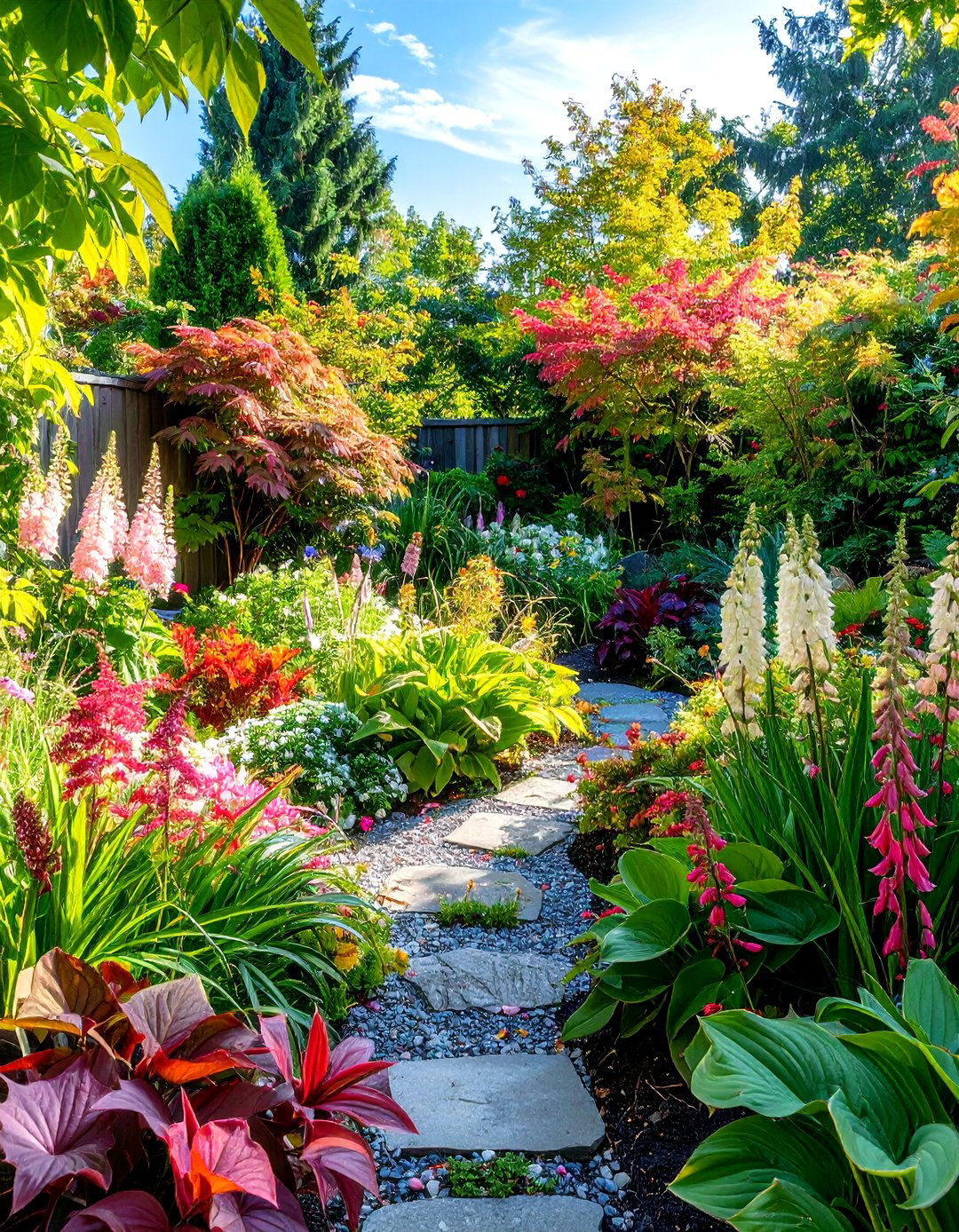

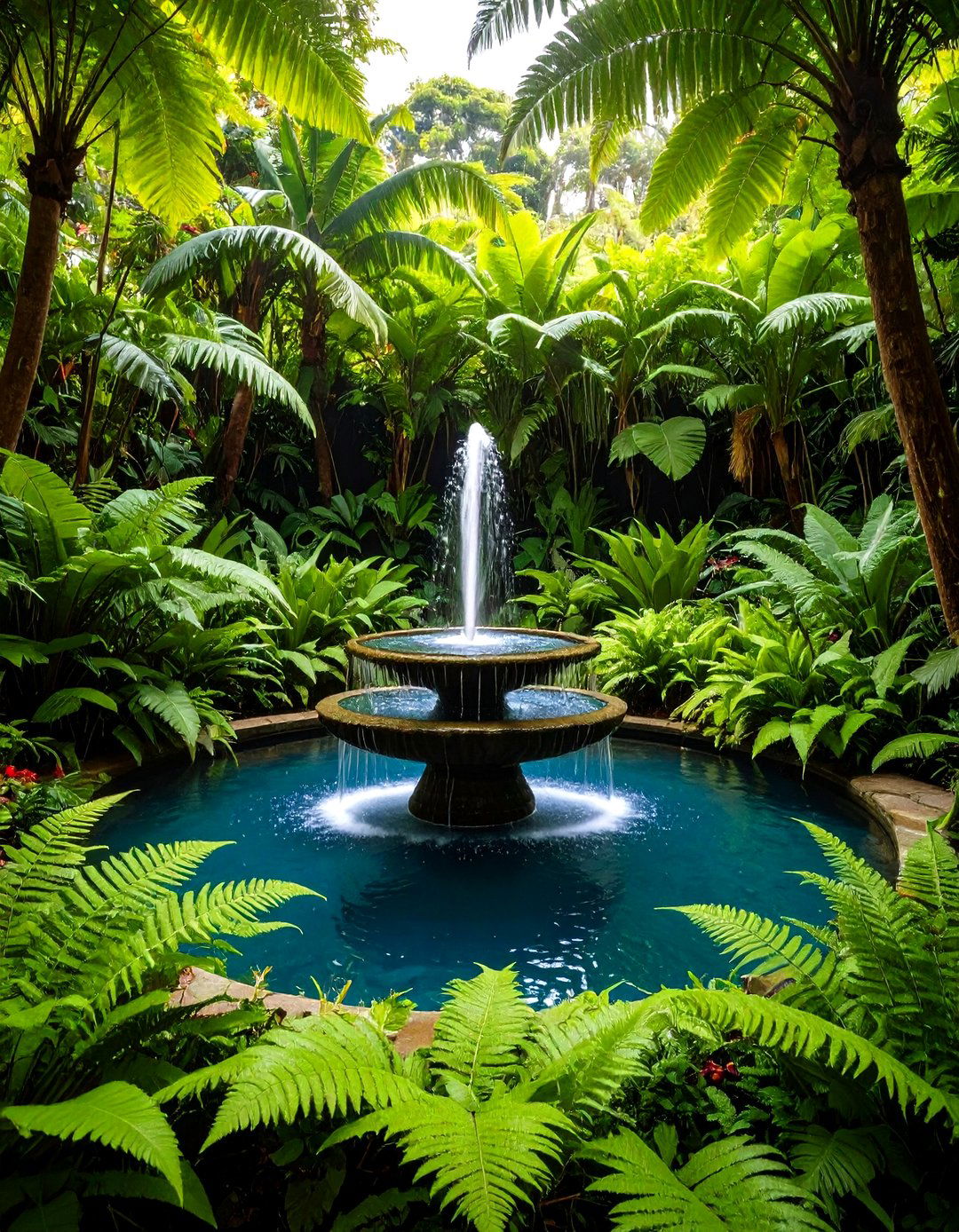
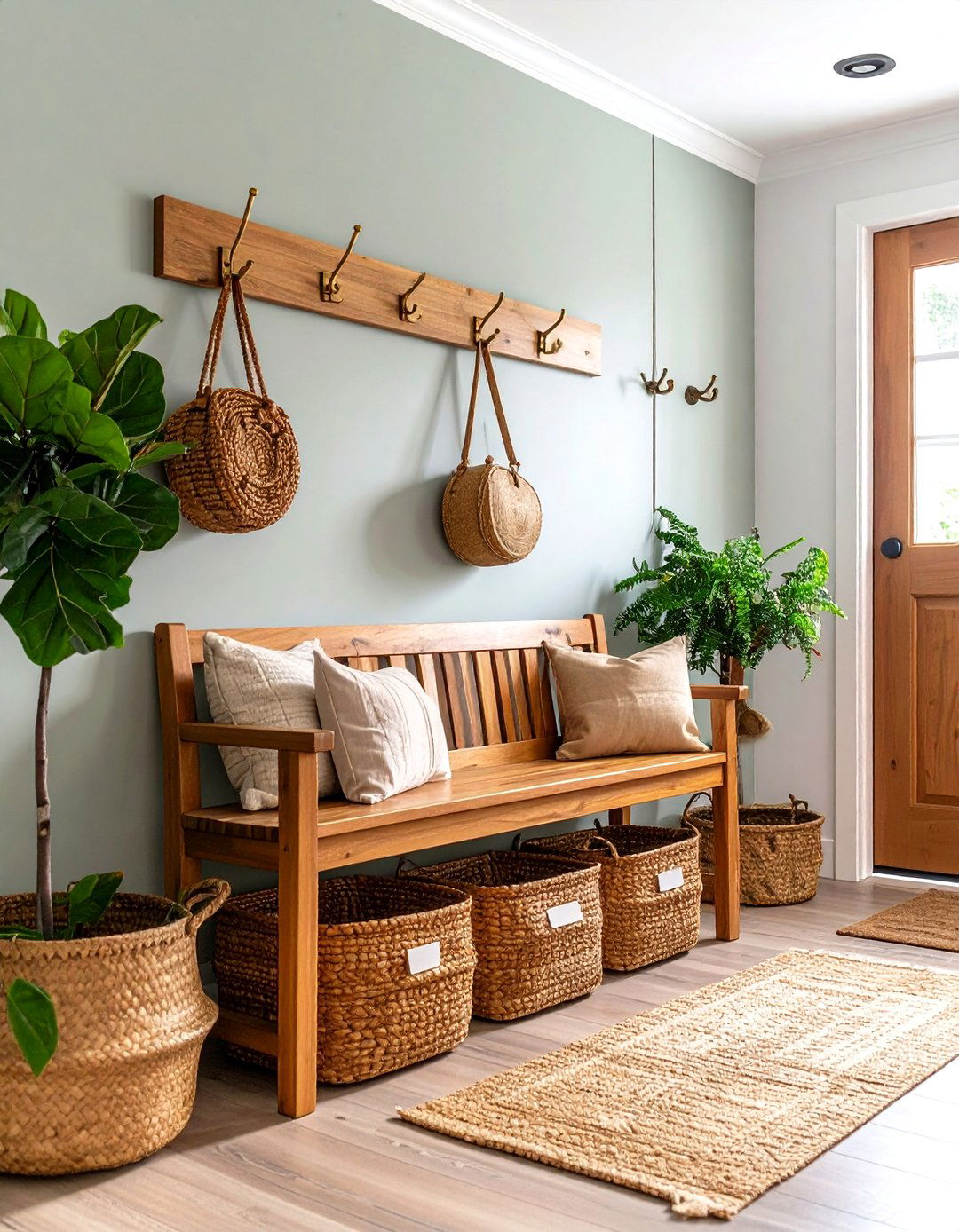
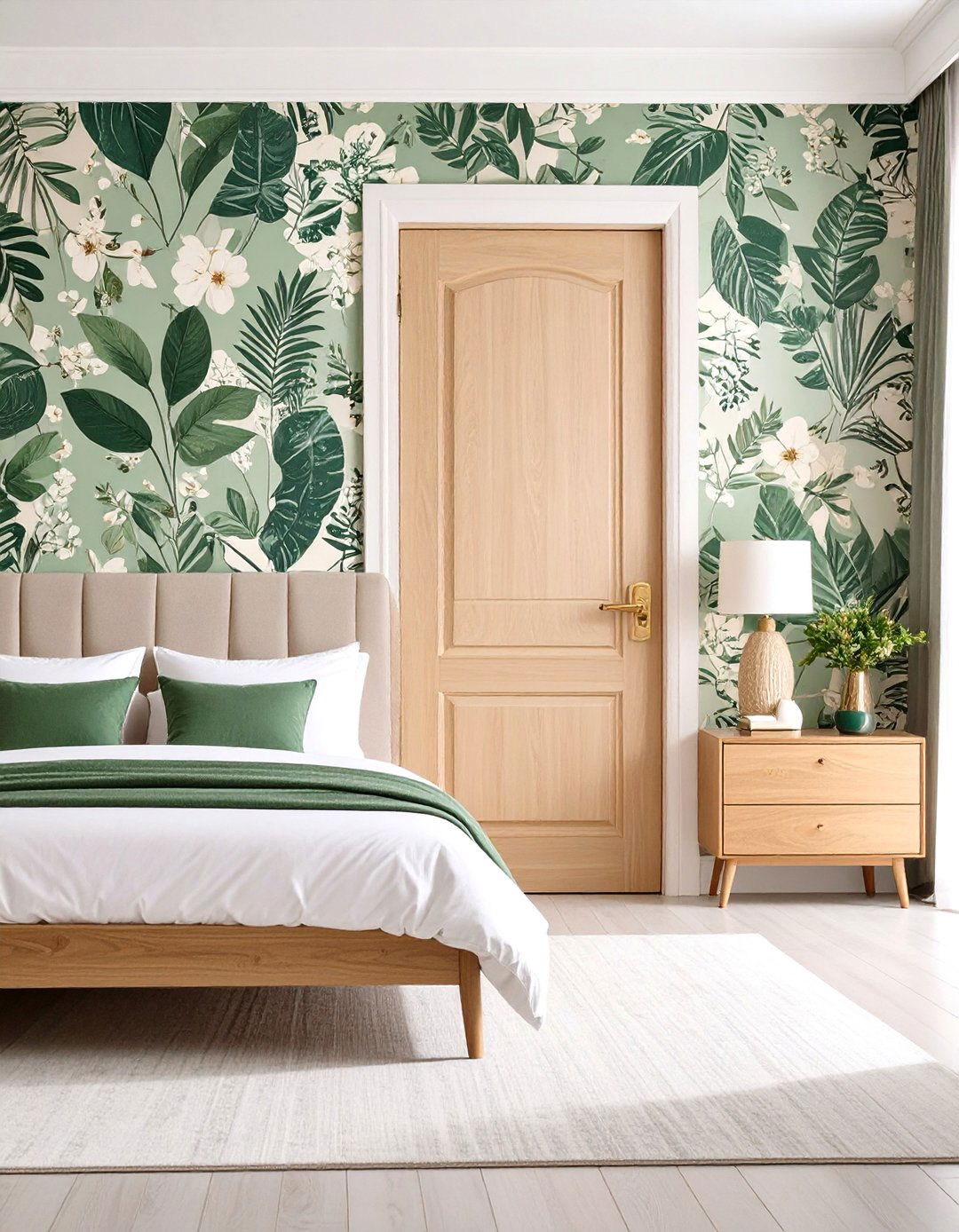
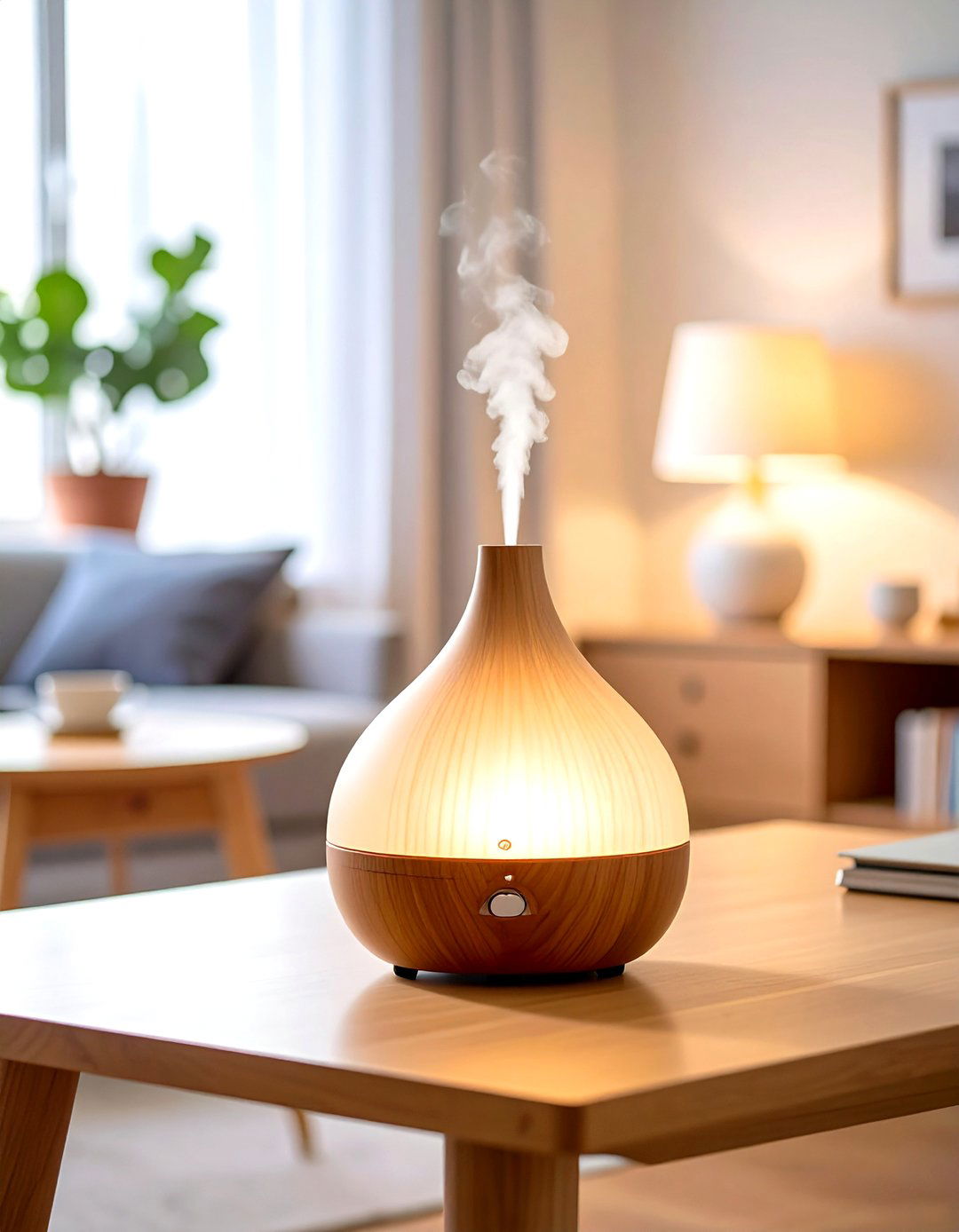
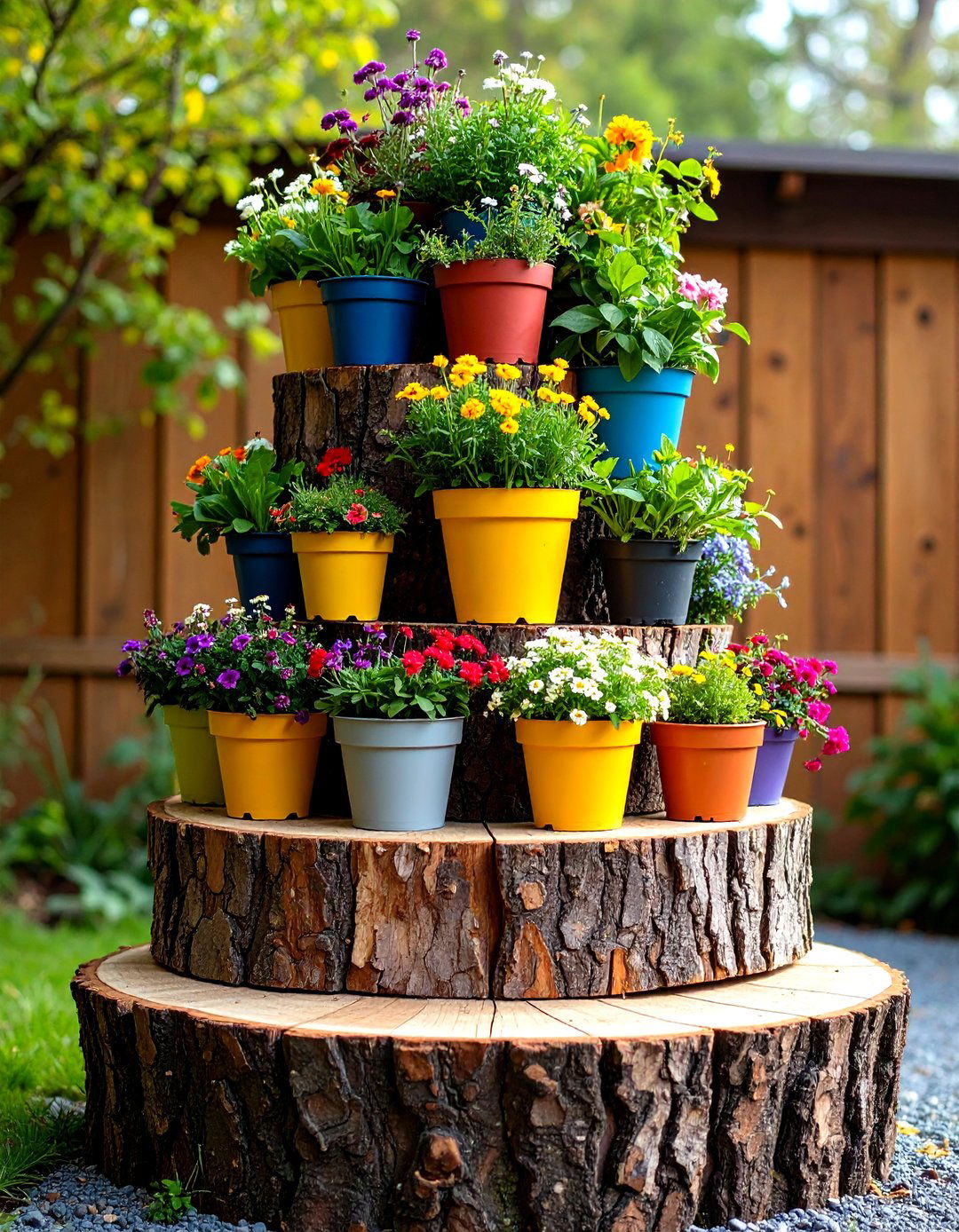
Leave a Reply